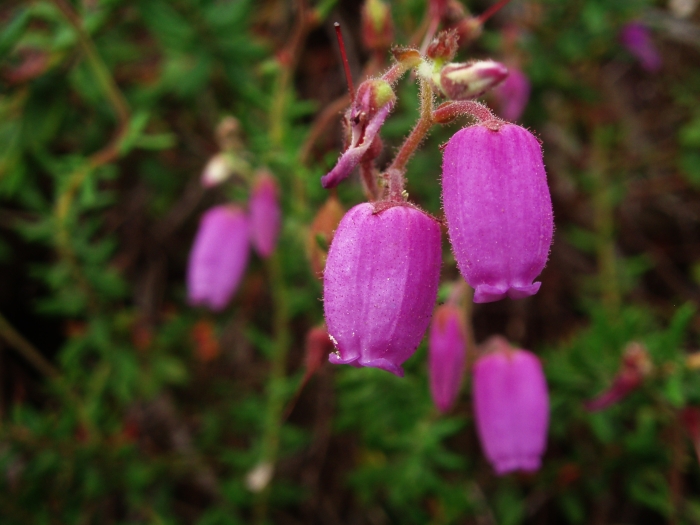Irish Heath
(Daboecia cantabrica)
Irish Heath (Daboecia cantabrica)
/
/

Mercedes Blanco
CC BY-SA 2.0
Image By:
Mercedes Blanco
Recorded By:
Copyright:
CC BY-SA 2.0
Copyright Notice:
Photo by: Mercedes Blanco | License Type: CC BY-SA 2.0 | License URL: https://creativecommons.org/licenses/by-sa/2.0 | Uploader: Epibase | Publisher: Wikimedia Commons | Title: Daboecia_cantabrica1373917974.jpg | Notes: |



















































Estimated Native Range
Summary
Daboecia cantabrica, commonly known as Irish Heath, is an evergreen subshrub native to heathlands and mountainous regions of Western Europe, particularly in Ireland and northwestern Spain. It typically grows to a height and width of approximately 2 feet (0.6 meters), forming a low, mounded shape. Irish Heath is characterized by its small, leathery leaves and bell-shaped flowers that come in shades of pink, purple, red, and white, blooming profusely from summer into fall, which are highly attractive to bees and butterflies.
Irish Heath is valued for its long flowering season and the vibrant colors of its blooms. It is often used in rock gardens, as ground cover, and in containers due to its compact size and ornamental qualities. This plant thrives in acidic, well-drained soils and benefits from consistent moisture, although it is somewhat drought-tolerant once established. It prefers a position with part shade to full sun exposure. While generally low-maintenance, it can be susceptible to root rot if overwatered or planted in poorly drained soils. Pruning after flowering can help maintain its shape and promote vigorous growth.CC BY-SA 4.0
Irish Heath is valued for its long flowering season and the vibrant colors of its blooms. It is often used in rock gardens, as ground cover, and in containers due to its compact size and ornamental qualities. This plant thrives in acidic, well-drained soils and benefits from consistent moisture, although it is somewhat drought-tolerant once established. It prefers a position with part shade to full sun exposure. While generally low-maintenance, it can be susceptible to root rot if overwatered or planted in poorly drained soils. Pruning after flowering can help maintain its shape and promote vigorous growth.CC BY-SA 4.0
Plant Description
- Plant Type: Subshrub
- Height: 0.5-2 feet
- Width: 1.5-2 feet
- Growth Rate: Moderate
- Flower Color: Pink, Purple, White
- Flowering Season: Summer, Fall
- Leaf Retention: Evergreen
Growth Requirements
- Sun: Part Shade, Full Sun
- Water: Medium
- Drainage: Medium, Fast
Common Uses
Groundcover, Low Maintenance, Rock Garden, Salt Tolerant, Showy Flowers
Natural Habitat
Heathlands and mountainous regions of Western Europe
Other Names
Common Names:
Scientific Names: , Daboecia cantabrica,
GBIF Accepted Name: Daboecia cantabrica (Huds.) C.Koch